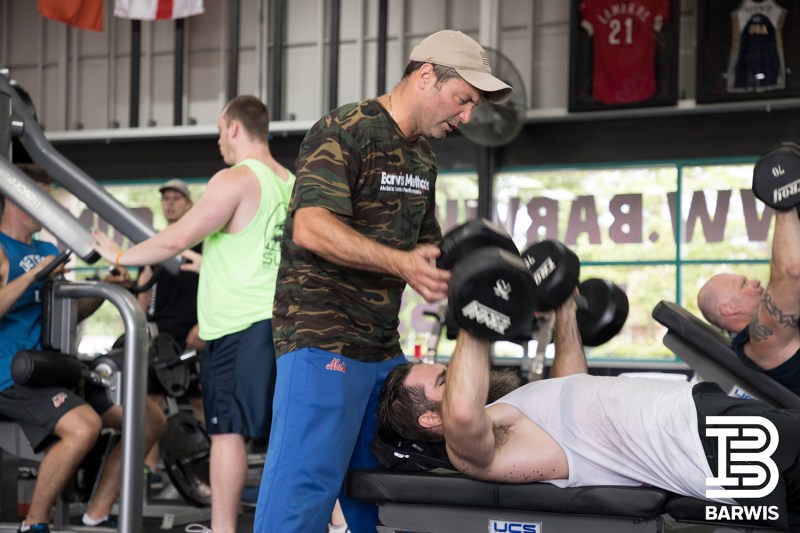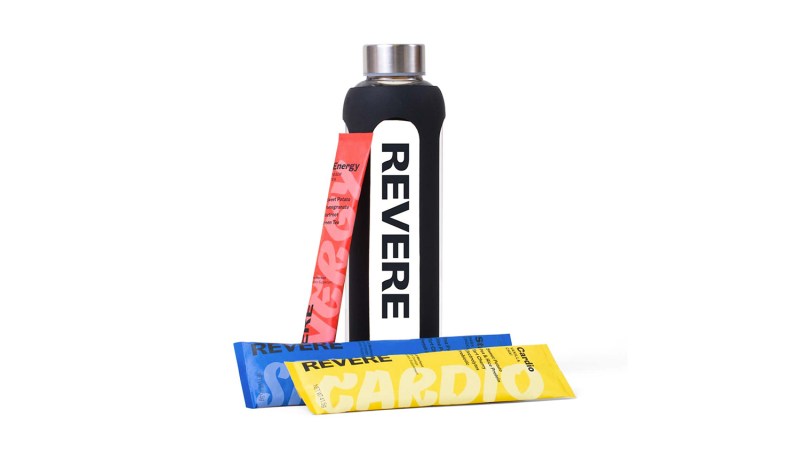What exactly separates the pros from the Joes? Other than being born with a 6′ 6″ frame and natural hand-eye coordination, that is.
We asked Mike Barwis — professional athlete trainer, senior advisor of strength and conditioning for the New York Mets, and founder of BARWIS Methods — how you and I can train insane like Richard Sherman (cornerback for the Seattle Seahawks) and Yoenis Céspedes (outfielder for the Mets), both of whom he has coached.
“I spent my whole life working with and training the world’s top athletes,” says Barwis, who has led rigorous programs for 42 different sporting events and 5,000 athletes. “I had never been in a regular gym. Then, once I opened my own with BARWIS Methods, I realized there’s a massive gap between pros and the general public. I mean extremely vast. The difference between what top athletes and the general population understand is highly different, meaning a lot of the break lies in education.”
Make a Plan
“It’s all a hodgepodge,” Barwis says of his reaction to seeing the general public working out. “There’s no plan.”
Instead of leaving your workout up to chance or feel, make a schedule. “The body conforms and adapts to the intensity and patterns it’s subjected to. So, when you’re looking to create adaptation (bigger, leaner, stronger, etc.), there has to be a habitual program that creates consistent loads or stresses on your body on a regular basis.”

In the pro world, Barwis calls these “cellular-specific programs”. He’s created such regiments for the Miami Dolphins, University of Michigan football, WNBA athletes, women’s soccer, NHL, ice hockey, softball, motocross, sprinters, and Olympic wrestlers and lifters. He’s also taken this cellular-specific approach to working with children and adults with neurological damage, disabilities, and disorders.
“Once you apply the correct habit and load to a cell, it will elicit a desired result and your body adapts to accommodate that stress. That’s when you see change. Right now, I see a lot of random stuff. So to change that, ask yourself ‘What’s my goal?’ and ‘What stresses to I need to place upon my body to accommodate them?’”
Barwis recommends a habitual cycle of two to three days a week — at least — working on strength in the gym. If your goal is cardio/running, you need four to five days a week, as it only takes two to three days off to lose aerobic capacity.
Balance Your Backside
In our modern world of driving cars and sitting at computers, Barwis says we have become much stronger in our anterior (front) side. This creates imbalance in connection with a weak posterior (back), leading to tighter quads, hamstrings, and more. Our dependency on anterior muscle groups follows us to the gym (after all, those are the muscles we can see), and we tend to train our chest, stomach, thighs, and biceps, as opposed to glutes, delts, back, and hammies.
“This creates poor development, poor range of motion, and sets you up for injury,” Barwis says. “Think instead of balancing out the anterior with the posterior, which in practice means five sets of bench to six sets of row, because you’re probably already overdeveloped in the front.”
Personalize Your Supplements
If you’re a pro, seven-figure athlete training in one of Barwis’ gyms, your schedule would look something like this: Get to the gym, eat a pre-prepared breakfast by Barwis’ nutritionists, workout, eat a pre-prepared snack, workout, eat a pre-prepared lunch, follow a recovery routine, and leave with prep-prepared dinner.
Nutrition is at least 50 percent of the equation.
“There’s an even greater difference in knowledge between the general population in terms of the science of nutrition,” Barwis admits. “Your body needs a certain kind and amount of fuel at a certain time, in collaboration with its training. But most of us don’t work out three hours a day, so we don’t need pure nitrous — just good, solid gasoline.”
Barwis was training NHL star Jack Johnson and Olympic swimmer Peter Vanderkaay, creating his own concoctions for the athletes, when one day they got together and suggested Barwis create his own branded supplements. Luckily, Barwis has a background in biochemistry alongside his astounding training credentials in exercise physiology, so he helped found the plant-based nutrition company Revere.

Revere personalizes monthly supplement subscriptions (i.e. powders for workout shakes) depending on a variety of factors in your regular training and working life. The goal? To place weekend warriors on the podium. As a nutrition mastermind for Revere (the three co-founders didn’t have a background in nutrition), Barwis aims to use pure food and whole, vegan ingredients with no chemicals.
“I would never send anyone I know, whether pro or Joe, to a supplement store to guess what their body needs and what dosage. None of those powders and drinks are regulated. You must know the details of the specific human being to be able to prescribe what their body needs,” Barwis says. “And Revere allows us to do that in a similar way as the pros.”
“What it boils down to are limits in understanding. These limits in understanding are direct limits in performance.”
Find what your unique supplement regiment would be here.


